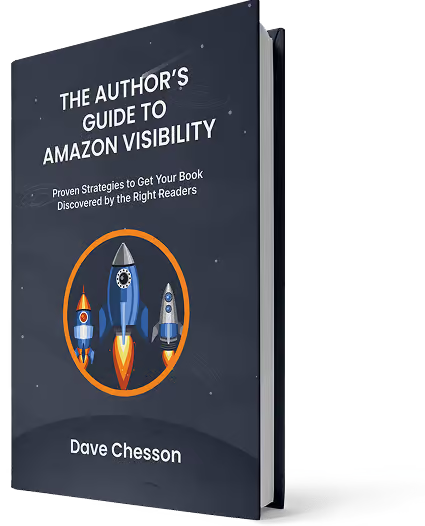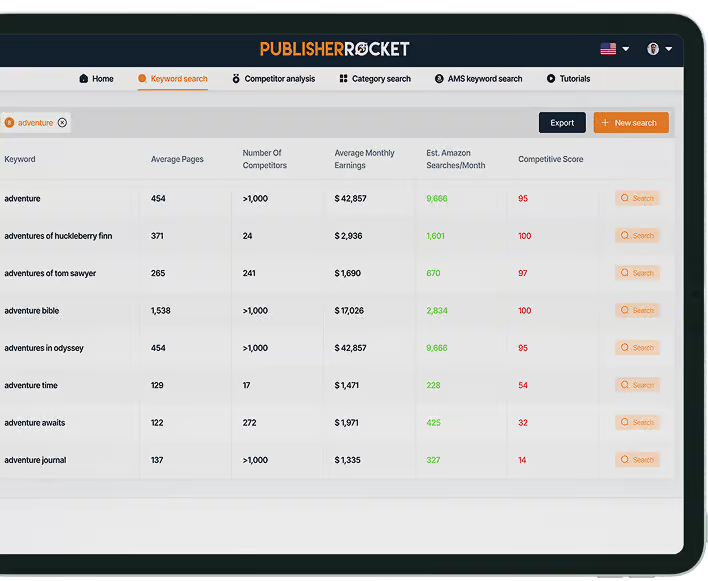The five act structure has been around for centuries.
Shakespeare used it. Sophocles used it. Your high school English teacher probably made you diagram it on the chalkboard.
It’s one of the oldest storytelling blueprints we have… a way of dividing a story into five distinct parts so the rise, peak, and fallout all feel deliberate instead of lopsided. And while it may not be as trendy today as the three act structure, it still shows up everywhere. Tragedies, classical comedies, prestige TV dramas… even modern blockbusters borrow pieces of it.
Think of it like the grandfather of story structure. Sure, it’s old-fashioned in places, but ignore it completely and you’ll miss a lot of what makes stories tick.
- What the five act structure is
- The 3 Act Structure vs 5 Act Structure
- A detailed breakdown of the 5 Act Structure
Let's jump right in.
What is the Five Act Structure?
At its core, the five act structure is exactly what it sounds like (a way of dividing a story into five parts):
- Introduction / Exposition
- Rising Movement
- Climax
- Falling Action
- Catastrophe / Resolution
If you’ve ever sat through a Shakespeare play, you’ve seen it in action. Tragedies like Hamlet live and die by this framework (literally… most of the cast ends up dead by Act V).
But it’s not just Shakespeare. For centuries, this was the dominant structure for storytelling.
It stayed wildly popular until the rise of film and television, which leaned toward a snappier three act model. But the five act structure never disappeared. You can still spot its fingerprints all over modern novels, movies, and TV. (Avengers: Endgame, for instance, practically walks through the five acts step by step.)
Interesting fact:
The man who really codified the 5-act structure was 19th-century German playwright Gustav Freytag. He mapped the whole thing into a tidy little diagram you may remember from English class: Freytag’s Pyramid.
It looks deceptively simple, but it’s been shaping stories for over 150 years.
The 3-Act Structure vs. 5-Act Structure
Writers have experimented with countless story frameworks, but two dominate: the three act structure and the five act structure.
The three act structure is simple, balanced, and tailor-made for movies, TV, and shorter novels. Break it down and it usually looks like this:
- Act I: ~25%
- Act II: ~50%
- Act III: ~25%
Clean. Symmetrical. Easy to map.
The five act structure is more layered. Its rhythm tilts toward buildup, fallout, and often tragedy. A rough breakdown looks like this:
- Act I: ~10%
- Act II: ~45%
- Act III: ~5%
- Act IV: ~35%
- Act V: ~5%
Here, the middle stretches longer, the climax gets its own act, and the resolution lingers more. That’s why tragedies (and the occasional comedy of errors) thrived on this model — it gave writers space to twist the knife and then slowly pull it out.
Shakespeare leaned on the five act like it was his favorite quill pen. Hollywood, meanwhile, prefers the tighter three act for pacing reasons. But you’ll still find traces of both structures in modern stories.
(The Dark Knight, for example, stretches beyond the three act mold. Its long middle and extended resolution look a lot closer to five acts.)
The Elements of Five Act Structure

Freytag didn’t just sketch a pyramid to look clever…
He mapped out a way of thinking about story that’s still echoed in plays, novels, movies, and TV today. Here’s how the five acts usually break down:
Act I: Introduction
Act I does two jobs:
- Sets the stage (exposition).
- Drops the first domino (the inciting incident, or as Freytag called it, the “exciting force”).
Let's look at The Hunger Games as an example.
Act I introduces Katniss, District 12, and a world where kids are forced to fight to the death. Then comes the complication: her sister’s name is drawn, and Katniss volunteers. That’s the jolt that propels the rest of the story.
Act I is usually about 10% of the total length. Quick, lean, and designed to push the story forward.
Act II: Rising Movement
Some call it rising action (Freytag called it “Rising Movement”), but you can think of it as the long climb up the rollercoaster. This is where tension builds, conflicts deepen, and all the key players are onstage by the end.
It’s the heftiest act (often 35–40% of the whole story).
In a mystery, this is where suspects multiply. In a romance, it’s where the spark starts to look like fire. In Pride and Prejudice, for example, it’s Elizabeth sparring with Darcy while every side character makes things messier.
The climax doesn’t happen here, but all the roads are leading there.
Act III: Climax
Here’s where people often get tripped up.
The climax of a story isn’t just the big fight scene or explosion. In Freytag’s model, it’s the turning point. The briefest act (sometimes only a scene) where the protagonist faces the consequences of everything so far and pivots, for better or worse.
Shakespeare gave us tragic midpoints like Hamlet deciding he’ll kill Claudius. Modern storytellers play with it too. In Breaking Bad, Walter White hitting his “I am the danger” moment is less about a shootout and more about an irreversible choice. (We'll come back to Walter a bit later.)
Freytag also divided the story here into Play (the rise) and Counterplay (the fall).
From this moment, the story starts leaning downhill.
Act IV: Falling Action
If Act II was climbing the rollercoaster, Act IV is the drop. Tension unwinds, choices play out, and things move toward either catastrophe (tragedy) or payoff (comedy).
This act mirrors Act II in size (roughly 25–30% of the story). It’s also where “final suspense” comes in: a flicker of hope that maybe, just maybe, the ending won’t be tragic.
Think of Romeo and Juliet. Juliet stirs, but too late. Or in The Return of the King, Frodo makes it to the crack of Mount Doom, only to falter (suspense right before the resolution lands).
Act V: Catastrophe (or Resolution)
Everything comes together here. In tragedy, it usually means death or downfall. In comedy, it’s weddings, reunions, and curtain calls.
Act V is short (often just a scene or two), but it provides the emotional release.
Hamlet’s final duel? Tragic.
The last episode of The Office? Everyone laughing and crying at the reunion.
Same function, different flavor.
The Five-Act Structure of Hamlet
If you want a textbook example of the five act structure, Hamlet delivers.
It’s tragic, it’s layered, and it hits every beat of Freytag’s pyramid with almost irritating precision.
Here’s how it plays out:
Act I: Exposition
Prince Hamlet learns from a ghost (who happens to be his dead dad) that his uncle Claudius murdered the king and married his mother.
(Nothing says “family drama” like a supernatural murder confession.)
Act II: Rising Action
Hamlet wrestles with doubt. Is the ghost telling the truth, or is he losing his mind?
To test Claudius, Hamlet stages a play that reenacts the murder. Claudius’s guilty reaction confirms the crime (and Hamlet’s suspicions).
Act III: Climax
This is Hamlet’s turning point. Instead of acting on the truth, he hesitates, kills Polonius by mistake, and digs himself deeper into chaos.
It’s less about a sword fight, more about Hamlet’s fatal indecision. From here, everything spirals downward.
Act IV: Falling Action
Madness spreads. Ophelia loses her grip. Laertes plots revenge. Claudius schemes harder.
The whole court feels like a pressure cooker, and everyone knows a bloody showdown is coming.
Act V: Catastrophe
The final duel seals it.
Hamlet kills Claudius but is fatally wounded. His mother drinks poisoned wine. Bodies drop like dominoes until nearly the whole cast is gone.
Curtain.
The Five Act Structure of Breaking Bad
Five act structure shows up everywhere… not only in stage plays, but in modern TV dramas too.
Few series demonstrated it better than Breaking Bad, which practically walked through Freytag’s pyramid beat by beat.
Walter White’s transformation from chemistry teacher to drug kingpin maps perfectly onto the model.
Act I: Exposition
Walter White is introduced as a mild-mannered high school chemistry teacher in Albuquerque. He’s diagnosed with terminal lung cancer, and with a baby on the way and bills piling up, he decides to cook meth to leave money behind for his family.
The stage is set.
Act II: Rising Action
Walt teams up with former student Jesse Pinkman.
As they cook in an RV and try to sell their product, tensions escalate with local dealers and law enforcement.
Walt gets pulled deeper into criminal choices, each one harder to walk back.
Act III: Climax (Midpoint)
The turning point comes when Walt embraces his darker side.
No longer just a man “providing for his family,” he declares, “I am the danger.”
In this act, Walt crosses the line into full-blown Heisenberg. The story shifts from survival to domination.
Act IV: Falling Action
Walt’s empire expands, but the fallout hits hard. Jesse’s relationships collapse, rivals close in, and Hank (Walt’s DEA agent brother-in-law) inches closer to the truth.
Walt tries to keep control, but every decision unravels more than it fixes.
Act V: Catastrophe (Denouement)
Everything crashes down.
Walt is exposed, loses his family, and goes on the run. In the finale, he returns to tie up loose ends, rescue Jesse, and take down his enemies, but at the cost of his own life. Walt dies, leaving behind a legacy of destruction he once swore to avoid.
Breaking Bad proves the five act structure isn’t confined to dusty plays. It can fuel sprawling, modern stories that keep audiences hooked for years.
The Five Act Structure vs. Other Frameworks
Spend five minutes in any writing forum and you’ll see every story shape under the sun. Three acts. Twelve steps. Fifteen beats. A pyramid. A snowflake.
They’re not fighting each other. They’re just different ways to describe the same heartbeat of story. The Five Act Structure happens to be one of the oldest, but it’s not the only lens worth knowing.
Here’s how it stacks up against some of the usual suspects:
- The Fichtean Curve – Built on nonstop rising action, this one works well for thrillers and fast-paced novels. But it leaves little space for reflection or gradual change. The Five Act Structure, by contrast, gives you room to breathe between surges.
- The Three Act Structure – The Hollywood workhorse. Simple, clean, and great for screenplays. Think of the five act model as a more detailed cousin: Acts I–III map closely, but Acts IV and V slow the descent and stretch the resolution.
- The Hero’s Journey – Campbell’s mythic cycle and Vogler’s screenwriting version are inspiring, but often overloaded with steps. The Five Act Structure strips things back, focusing more on pacing and tension than symbolic milestones.
- Freytag’s Pyramid – This is basically the five act structure in diagram form. Exposition, rising action, climax, falling action, resolution. Neat and tidy on paper, though it can feel rigid when applied too literally.
- Save the Cat Beat Sheet – Fifteen beats that dominate Hollywood blockbusters. It’s great for plotting external events, but it doesn’t always dig into character transformation. The five act model balances both.
- The Snowflake Method – More of a planning tool than a structure. It’s handy for blowing up a single idea into an outline, but you’ll still need a framework like the five act model to shape the actual story arc.
- The Seven Point Story Structure – Quick checkpoints (hook, plot turns, pinch points, midpoint, resolution). Useful for orientation, but it doesn’t tell you how the tension should rise and fall. The five act model covers that.
- The Story Spine – Pixar’s favorite brainstorming formula: “Once upon a time… Every day… Until one day…” Good for spitballing, but it runs out of steam fast. The five act model carries you all the way through.
- In Media Res – Not a structure, just a flashy entry point. Jumping into the action works, but you’ll still need something like the five act framework to hold the rest of the story together.
- Dan Harmon’s Story Circle – A modern eight-step framework popular in TV writing. Where the Five Act Structure tracks tension and resolution, the Story Circle zeroes in on character transformation. Together, they give you both the outer arc and the inner journey.
Final Thoughts on the Five-Act Structure
The five act structure has been around for centuries, and for good reason. It gives you a clear roadmap for pacing, tension, and payoff (whether you’re writing a tragedy, a sprawling novel, or even a prestige TV series).
You can follow it closely, bend it, or mix it with other structures (the three act, the Hero’s Journey, the Story Circle) to fit your story. The point isn’t to force your book into a rigid outline, but to give yourself a shape you can push against.
And if you’d like a hand keeping that shape straight, tools like Plottr make it simple. Their pre-built templates include the five act structure (and plenty of others), so you can map out your story visually and then focus on the fun part: writing it.
The five act structure won’t do the work for you.
But it will keep your story standing tall, no matter how heavy the themes or how big the cast of characters.
And that’s why it’s lasted from Shakespeare to today.
—
An earlier version of this article was authored by Jason Hamilton. It has been rewritten and expanded for freshness and comprehensiveness.






